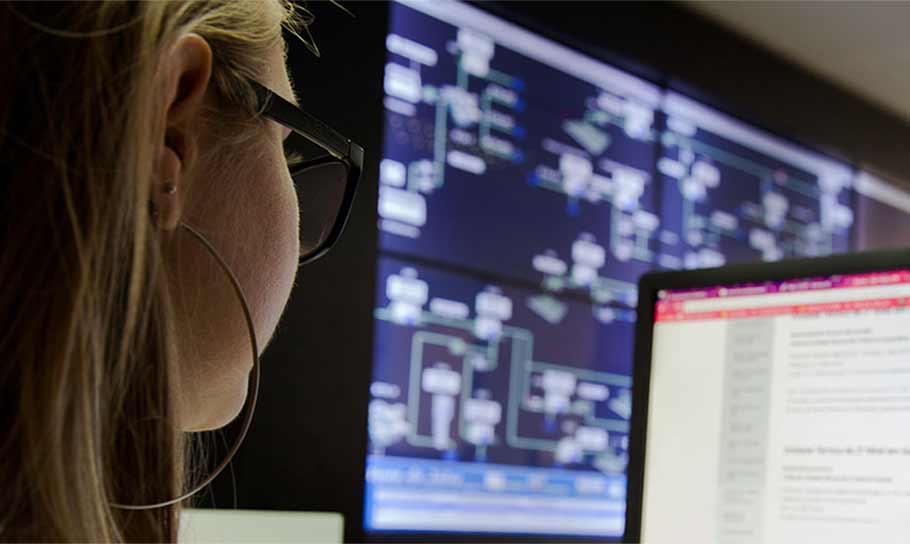-
Financial reporting and accounting advisory services
You trust your external auditor to deliver not only a high-quality, independent audit of your financial statements but to provide a range of support, including assessing material risks, evaluating internal controls and raising awareness around new and amended accounting standards.
-
Accounting Standards for Private Enterprises
Get the clear financial picture you need with the accounting standards team at Grant Thornton LLP. Our experts have extensive experience with private enterprises of all sizes in all industries, an in-depth knowledge of today’s accounting standards, and are directly involved in the standard-setting process.
-
International Financial Reporting Standards
Whether you are already using IFRS or considering a transition to this global framework, Grant Thornton LLP’s accounting standards team is here to help.
-
Accounting Standards for Not-for-Profit Organizations
From small, community organizations to large, national charities, you can count on Grant Thornton LLP’s accounting standards team for in-depth knowledge and trusted advice.
-
Public Sector Accounting Standards
Working for a public-sector organization comes with a unique set of requirements for accounting and financial reporting. Grant Thornton LLP’s accounting standards team has the practical, public-sector experience and in-depth knowledge you need.
-
Tax planning and compliance
Whether you are a private or public organization, your goal is to manage the critical aspects of tax compliance, and achieve the most effective results. At Grant Thornton, we focus on delivering relevant advice, and providing an integrated planning approach to help you fulfill compliance obligations.
-
Research and development and government incentives
Are you developing innovative processes or products, undertaking experimentation or solving technological problems? If so, you may qualify to claim SR&ED tax credits. This Canadian federal government initiative is designed to encourage and support innovation in Canada. Our R&D professionals are a highly-trained, diverse team of practitioners that are engineers, scientists and specialized accountants.
-
Indirect tax
Keeping track of changes and developments in GST/HST, Quebec sales tax and other provincial sales taxes across Canada, can be a full-time job. The consequences for failing to adequately manage your organization’s sales tax obligations can be significant - from assessments, to forgone recoveries and cash flow implications, to customer or reputational risk.
-
US corporate tax
The United States has a very complex and regulated tax environment, that may undergo significant changes. Cross-border tax issues could become even more challenging for Canadian businesses looking for growth and prosperity in the biggest economy in the world.
-
Cross-border personal tax
In an increasingly flexible world, moving across the border may be more viable for Canadians and Americans; however, relocating may also have complex tax implications.
-
International tax
While there is great opportunity for businesses looking to expand globally, organizations are under increasing tax scrutiny. Regardless of your company’s size and level of international involvement—whether you’re working abroad, investing, buying and selling, borrowing or manufacturing—doing business beyond Canada’s borders comes with its fair share of tax risks.
-
Transfer pricing
Transfer pricing is a complex area of corporate taxation that is concerned with the intra-group pricing of goods, services, intangibles, and financial instruments. Transfer pricing has become a critical governance issue for companies, tax authorities and policy makers, and represents a principal risk area for multinationals.
-
Succession & estate planning
Like many private business owners today, you’ve spent your career building and running your business successfully. Now you’re faced with deciding on a successor—a successor who may or may not want your direct involvement and share your vision.
-
Tax Reporting & Advisory
The financial and tax reporting obligations of public markets and global tax authorities take significant resources and investment to manage. This requires calculating global tax provision estimates under US GAAP, IFRS, and other frameworks, and reconciling this reporting with tax compliance obligations.

-
Transactions
Our transactions group takes a client-centric, integrated approach, focused on helping you make and implement the best financial strategies. We offer meaningful, actionable and holistic advice to allow you to create value, manage risks and seize opportunities. It’s what we do best: help great organizations like yours grow and thrive.
-
Restructuring
We bring a wide range of services to both individuals and businesses – including shareholders, executives, directors, lenders, creditors and other advisors who are dealing with a corporation experiencing financial challenges.
-
Forensics
Market-driven expertise in investigation, dispute resolution and digital forensics
-
Consulting
Running a business is challenging and you need advice you can rely on at anytime you need it. Our team dives deep into your issues, looking holistically at your organization to understand your people, processes, and systems needs at the root of your pain points. The intersection of these three things is critical to develop the solutions you need today.
-
Creditor updates
Updates for creditors, limited partners, investors and shareholders.

-
Governance, risk and compliance
Effective, risk management—including governance and regulatory compliance—can lead to tangible, long-term business improvements. And be a source of significant competitive advantage.
-
Internal audit
Organizations thrive when they are constantly innovating, improving or creating new services and products and envisioning new markets and growth opportunities.
-
Certification – SOX
The corporate governance landscape is challenging at the best of times for public companies and their subsidiaries in Canada, the United States and around the world.
-
Third party assurance
Naturally, clients and stakeholders want reassurance that there are appropriate controls and safeguards over the data and processes being used to service their business. It’s critical.
-
 ASPE Sec. 3041 Agriculture Understanding and applying the new ASPE Section 3041 AgricultureThe Canadian Accounting Standards Board (AcSB) has released new guidance on recognizing, measuring and disclosing biological assets and the harvested products of bio assets.
ASPE Sec. 3041 Agriculture Understanding and applying the new ASPE Section 3041 AgricultureThe Canadian Accounting Standards Board (AcSB) has released new guidance on recognizing, measuring and disclosing biological assets and the harvested products of bio assets. -
 Tax alert Agricultural Clean Technology ProgramThe Agricultural Clean Technology Program will provide financial assistance to farmers and agri-businesses to help them reduce greenhouse gas (GHG) emissions.
Tax alert Agricultural Clean Technology ProgramThe Agricultural Clean Technology Program will provide financial assistance to farmers and agri-businesses to help them reduce greenhouse gas (GHG) emissions. -
 Tax alert ACT Program – Research and Innovation Stream explainedThe ACT Research and Innovation Stream provides financial support to organizations engaged in pre-market innovation.
Tax alert ACT Program – Research and Innovation Stream explainedThe ACT Research and Innovation Stream provides financial support to organizations engaged in pre-market innovation. -
 Tax alert ACT Program – Adoption Stream explainedThe ACT Adoption Stream provides non-repayable funding to help farmers and agri-business with the purchase and installation of clean technologies.
Tax alert ACT Program – Adoption Stream explainedThe ACT Adoption Stream provides non-repayable funding to help farmers and agri-business with the purchase and installation of clean technologies.
-
Builders And Developers
Every real estate project starts with a vision. We help builders and developers solidify that vision, transform it into reality, and create value.
-
Rental Property Owners And Occupiers
In today’s economic climate, it’s more important than ever to have a strong advisory partner on your side.
-
Real Estate Service Providers
Your company plays a key role in the success of landlords, investors and owners, but who is doing the same for you?

-
Mining
There’s no business quite like mining. It’s volatile, risky and complex – but the potential pay-off is huge. You’re not afraid of a challenge: the key is finding the right balance between risk and reward. Whether you’re a junior prospector, a senior producer, or somewhere in between, we’ll work with you to explore, discover and extract value at every stage of the mining process.
-
Oil & gas
The oil and gas industry is facing many complex challenges, beyond the price of oil. These include environmental issues, access to markets, growing competition from alternative energy sources and international markets, and a rapidly changing regulatory landscape, to name but a few.

In our first article examining industries at a crossroad, we outline how car dealerships can maintain their relevance in a market that’s increasingly shaped by digitization, supply chain disruption, and changing customer needs and behaviours.
We’ll be publishing new content focused on other industries soon, so be sure to sign up for first access.
Historical shifts and growing pressures
There’s been a growing shift in the retail car-buying experience over the last two decades. While historically slow moving, the past two years have accelerated change due to evolving consumer demands and significant supply chain issues. Where the process to buy a car was once entirely driven by a physical visit to a dealership, the industry has pivoted to a hybrid model that combines digital and in-person purchasing processes. Consumers are increasingly educated from internet research, including online videos and elaborate websites from manufacturers and dealers that typically list their available inventory. The result is that they can now make informed choices without leaving home.
Ongoing supply chain challenges and outdated sales tactics haven’t helped to create lasting relationships with customers. Dealers with low inventory have been advocating for buyers to custom-order their cars; in reality, the process has become more robotic, where the dealer has little importance in the process other than acting as an order taker. Many dealers have adopted a “take it or leave it” approach in response to pent-up demand and low stock. This frustrates customers but sees dealers reaping strong profits due to low inventory carrying costs and the ability to sell their inventory quickly at a non-negotiable price. It all leads to a key question: what’s the dealer’s value proposition when customers are walking away feeling like they’re not equal partners in the process?
An industry at an inflection point
The industry is now at an inflection point: original equipment manufacturers (OEMs) have mandated substantial investments by dealers to build expensive structures, which can mean taking on substantial debt, yet dealers now face fewer in-person customers, inventory shortages, increased labour costs, and high inflation. Once consumer demand drops due to diminished buying power, buyers will also become more cautious with their dollars as infrastructure costs continue to rise. It’s clear to automotive retailers—and their lenders holding significant debt—that something needs to change. The survival of the dealership will depend on finding new ways to attract customers, keeping their best people, and reducing costs.
An evolving consumer experience
The savvier consumer doesn’t miss old-school heavy-handed sales tactics—they want a seamless and streamlined process for purchasing a vehicle. This demands significant behavioural and cultural changes: the dealership and its sales force will need to move away from stressful negotiation tactics and high-pressure approaches, and sales associates will need to present themselves as more professional and informed representatives who can offer personalized responses to their customers. In other words, dealerships need to adapt to provide a positive consumer experience that can’t be substituted with online research and e-commerce.
A new paradigm for manufacturers and dealers
The relationship between manufacturers and dealers should evolve in step with changing customer behaviours and expectations by employing new technology and skills to help their sales associates provide innovative digital enhancements to the purchasing experience. In an interview with McKinsey & Company, Matthew Gold, former chief strategy officer of Cars.com, says this can be accomplished by investing in end-to-end digital partnerships to ensure their offering is similar to—or better than—a digital-only experience.
The customer experience in retail vehicle sales was created by auto manufacturers; however, they do not have the same access to customers as dealerships. This means manufacturers need to reinforce their relationships with the dealerships to create brand loyalty. As suggested by the Accenture Report, “A customer experience reboot: Pivoting toward the automotive industry’s future success,” the manufacturer should:
- Regain dealer’s trust
- Define the future role of the dealer
- Build a 1+1>2 win-win relationship
- Create flexibility in implementation 1
The report’s first recommendation requires manufacturers to recognize and acknowledge that dealers are likely to “remain the backbone of autonomous sales and aftersales for the foreseeable future.” A strong and cohesive relationship between dealers and manufacturers can be accomplished by focusing on budgets, sales areas, and data system integration. This will create the data pool necessary to build this enterprise, as noted by the report.
Instead of having dealers accept a set of rigid new processes and procedures, manufacturers can adopt a flexible approach by presenting dealers with a list of ways to address and bolster their markers for success. The report further says that dealers can then pick and choose which applications will promote sales and growth (e.g., demographics, commercial vs. retail, urban vs. rural, etc.).
[1] Accenture (NYSE: ACN): (NYEE: ACN): Article: To Boost the Customer Experience, Automakers Must Enhance Collaboration with Dealers, Accenture Report Finds: New York, January 6, 2022
The role of technology and digitization
Manufacturers are finding high-tech and low-tech ways of channelling the potential customer to their dealers and salesforce. For example, in a Sitel Group article called, “What is the future of car dealerships?” BMW has employed big data analytics to steer prospective customers to their brand and dealer locations, while U.S. luxury car brand Lincoln has utilized dealership experiences with more than a simple test drive. This includes providing dealers with specialized calendars of live events, cafés, and small restaurants within their welcoming waiting areas. With these immersive purchasing experiences described in the article, manufacturers are ensuring the potential customer is drawn to their brand.
Advancements in technology now allow manufacturers to directly connect with consumers. Before a potential buyer ever enters a dealership, automakers can collect and analyze data through a car’s connected and digital components. For example, data can be obtained by inviting consumers and automakers to live events featuring both physical and virtual test drives. The BCG article, “It’s time for a new way to sell cars,” explains that the data can be collected and analyzed for preferred models and features in a specific dealer’s demographic area, thus growing sales by increasing the odds of having suitable vehicles as part of a retailer’s inventory.
The Sitel Group article also explains how J.D. Power makes the case for identifying a pathway into the retail vehicle purchase experience. They have researched that it takes on average ten hours and a three-month process to achieve this pathway. With approximately 120 digital touchpoints and as many as four pivots between on-line and in-person encounters, it becomes crucial that these shifts are seamless, productive and informative. When an initial in-person exchange with a sales associate turns a client off, the customer may be permanently lost to that retailer—and the entire brand.
The importance of branding
In order to draw customers to their brand, manufacturers and dealerships should access the channels being used by their potential car buyers, including paid ads on search engines such as Google or on social medial platforms like YouTube, Facebook and Instagram. They can also create digital and physical contact centres that provide live chats and responses, adds the Sitel Group article. It’s important to note that establishing a strong brand shouldn’t be limited to digital marketing—research suggests family, friends, and work colleagues continue to be the number one influence for the potential car buyer. Bain & Company’s study of more than 5,000 car buyers from five of the largest car markets says, “among survey respondents, 44% of buyers follow recommendations they get in their private environment.”
The dealership’s role post-purchase
A vehicle’s post-purchase maintenance and repair costs makes it obvious the retailer’s role must remain invaluable to the customer. Research from the Sitel Group article suggests customers who visited a dealership for servicing and maintenance and who had a positive experience are more likely to return to that dealership to purchase their next car. To get the consumer experience right, the dealership should implement and perfect an informative and personalized after-purchase process and maintain communications with the buyer.
Used cars also make use of service and parts departments. Dealerships should reinforce that a good rapport with both service and parts will be beneficial to the customer and can build a sense of trust that will translate to proper care and use of OEM parts in their vehicles. In turn, clients who buy their cars from that dealer can be rewarded for their loyalty. This can include prioritized service appointments, special service and parts discounts, and other perks such as free shuttle service or home pick up and loaner cars.
Have questions? Let us help.
Technology and digitization play a crucial role in all industries and are a driving force behind changing customer behaviours. The moment of truth for dealerships will be the ability to create and maintain unique, personalized, long-lasting, and positive interactions with potential buyers, while dealers with a short-term focus on maximizing profitability—while ignoring their customers’ changing needs and expectations—will likely be left behind. We can help you navigate complexity and change to find the way forward.
Insights
Subscribe to receive relevant and timely insights and event invitations.





